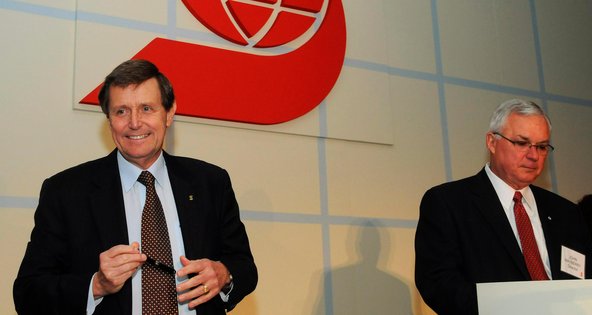A gloomy earnings report and outlook on Wednesday from Caterpillar, the world’s largest construction equipment company, helped to pull two of the three major American indexes lower.
The drop for the Dow and the Standard Poor’s 500-stock index gave the stock market two consecutive days of losses, for the first time in a month.
Caterpillar’s earnings fell 43 percent in the second quarter as China’s economy slowed and commodity prices sank. The company also warned of slowing revenue and profit, and its stock dropped $2.08, or 2 percent, to $83.44.
Nine of 10 industry groups in the S. P. 500 ended lower.
The holdouts were technology companies, which got a lift from Apple’s surging stock. Apple shares jumped $21.52, or 5 percent, to $440.51. The Nasdaq composite index, which lists many technology companies, edged up 0.33 of a point, or less than 0.1 percent, to 3,579.60.
The Dow Jones industrial average fell 25.50 points, or 0.2 percent, at 15,542.24.
The S. P. 500-stock index fell 6.45 points, or 0.4 percent, to 1,685.94. Although far from a blockbuster earnings season, the larger trend for corporate profits appears strong. Analysts forecast that second-quarter earnings for companies in the S. P. 500 increased 4.2 percent over the same period last year, according to SP Capital IQ. At the start of the month, those analysts were looking for earnings to rise 2.8 percent. More than six out of every 10 companies have surpassed Wall Street’s profit targets.
“Yes, they’re beating expectations, but expectations are so low,” said Brad McMillan, chief investment officer at Commonwealth Financial.
But financial firms, like Goldman Sachs and Capital One, have posted the highest rate of earnings growth of any industry. Ignore their results, however, and earnings are on track to slump 3.5 percent, according to FactSet.
“You can’t call this a blowout quarter so far,” Mr. McMillan said.
In the market for government bonds, the benchmark 10-year Treasury note fell 21/32 to 92 26/32, to yield 2.58 percent, up from 2.51 percent late Tuesday.

Article source: http://www.nytimes.com/2013/07/25/business/daily-stock-market-activity.html?partner=rss&emc=rss

